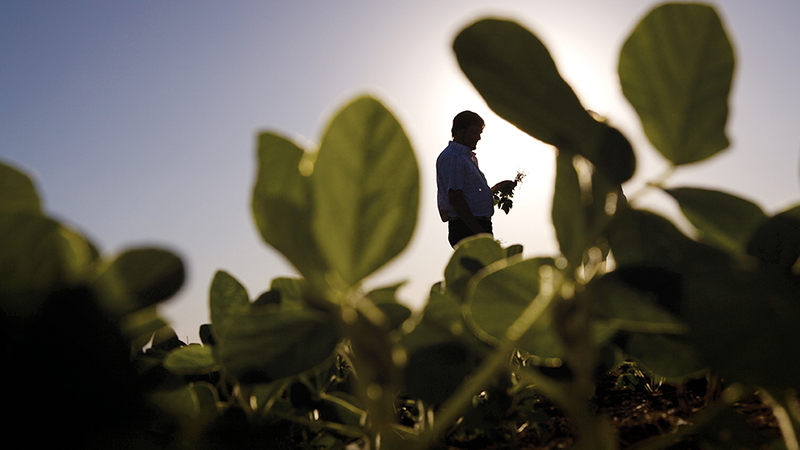What No One Tells You About Soil Conservation and Long-Term Sustainability?
Not a day goes by where the importance of active soil conservation for increased productivity, profitability, and sustainability goes unmentioned in the news. With all the media articles on cover crops, no-till farming, and precision agriculture, one would think that we’ve been making sizable progress in soil conservation. Despite the increased publicity, most of the tools at the disposal of farmers and landowners have not been used.
For example, the Illinois Nutrient Loss Reduction Strategy (NLRS) recently revealed in their biannual report that every year more than 400 million pounds of nitrate-nitrogen and around 38 million pounds of total phosphorus from Illinois flow into the Mississippi River. Although tillage has been reduced over time, according to recent Economic Research Service (ERS), about half of the farmers still use full-width tillage every year and it is in part why we are seeing the nutrient losses above.
The challenge is to practically convert current agriculture practices into more resilient systems for soil conservation. Neglecting conservation methods affects soil’s long-term productivity, health, and the farm’s profitability. So, why are soil conservation efforts not a more active common practice?
What’s Preventing It?
An important step towards land stewardship is to reduce the amount of nitrogen in runoff water. There are various practices to do so such as planting of cover crops and no till farming. Other practices involve drainage systems and edge of field or off-site practices. According to USDA Natural Resources Conservation Service, edge of field practices involve quantifying the amount of nutrients and sediment in water runoff from a field. An example of this includes installing a bioreactor at the edge of your field to convert the nitrogen in tile water to benign nitrogen gas.
As apparent as these solutions seem, executing upon these practices often seems bureaucratically daunting and financially difficult for farmers. The biggest deterrent we hear about soil conservation efforts is the cost to the producer or the landowner. Farmers want to be involved in more progressive conservation efforts, but the challenging farm economy has made it difficult for them to invest in these practices. Most owners have to choose between conservation or productivity — and the latter almost always wins.
The Solution

The key to soil conservation lies in a delicate ecosystem of multiple best practices, players, and products.
As noted above, while conservation awareness is on the rise, adoption and implementation of sustainable agricultural practices is still a dilemma. Fortunately, sub-watershed level and watershed-based planning is an effective method to mitigate costs. Since it is less feasible to manage edge of field practices on every single farm, a better solution is to have one conservation practice instead of 15+ edge of field practices in a 1,000-acre watershed. Often the inconveniences and constraints around soil health practice implementation arise from working individually. The knowledge base around soil health can openly be discussed among the watershed members to create awareness around profitability, lower risk, and long-term soil health.
The efforts can be treated as a farm community investment that creates a much lower cost per acre. This planning involves multiple stakeholders throughout the entire watershed partnering together, identifying solutions, and implementing a sustainable plan with economies of scale. This method is more cost effective and profitable, and makes it easier to transition from one farm owner or operator to another.
Third-Party Facilitation
A critical solution to soil health plan implementation is third-party facilitation that can help landowners in the watershed understand, coordinate, and suggest appropriate solutions. Third-party consultants can advise on the best practices that provide efficient designs, accurate data, lower costs and reduced risk. For increased profitability and better yields, it’s important to work with neighbors and plan holistically with facilitators. Unbiased opinion is crucial in such circumstances where multiple parties are involved. Companies that have products to sell might unknowingly provide biased opinions to push sales. For instance, drainage product manufactures are going to often recommend drainage product solutions that are in their best interest; or irrigation companies are going to likely recommend standard solutions from their portfolio that are not always best for a watershed.
The key to soil conservation lies in a delicate ecosystem of multiple best practices, players, and products. Therefore, it’s important to have an unbiased advocate to attain long-term sustainability and profitability. Incremental costs often prevent businesses from fully embracing conservation practices. Bringing together all the parties involved in a watershed can reduce many of the cost related constraints through economies of scale. Watershed planning and proper drainage methods can also implement practices that optimize soil health and the lasting value of the farm and land. The soil health initiatives can be easier and affordable to achieve within a watershed through collaboration on common goals and reiteration of long-term benefits under the guidance of third-party experts.





